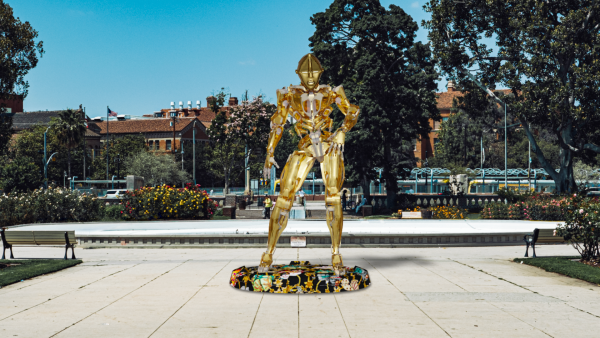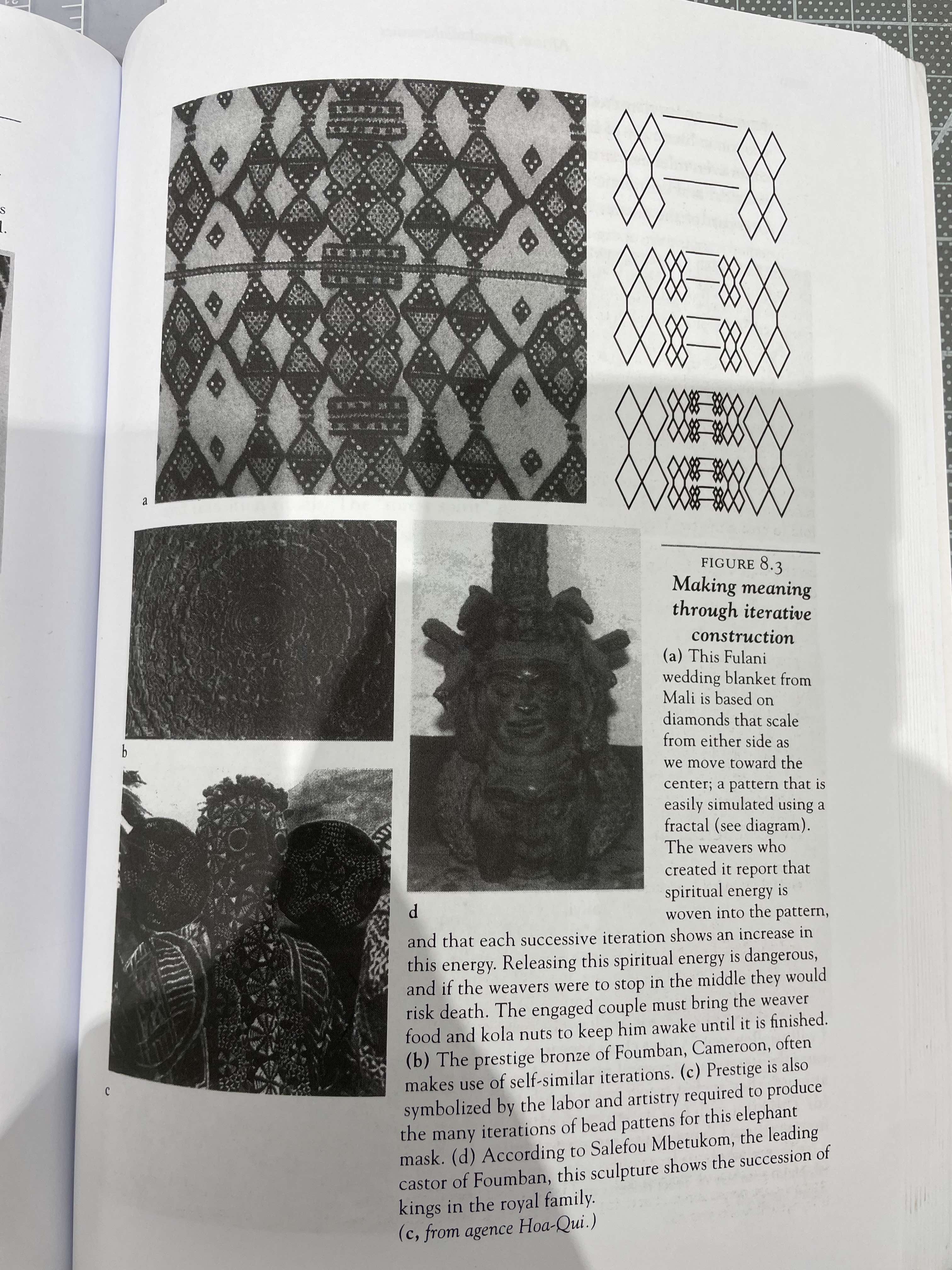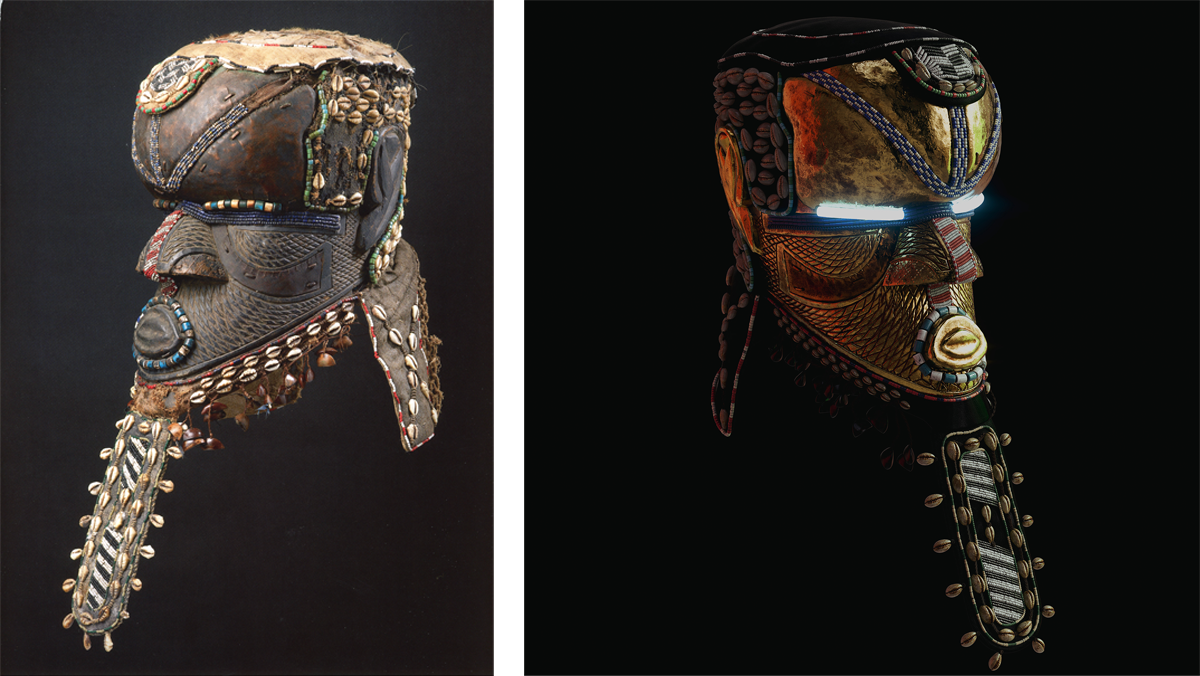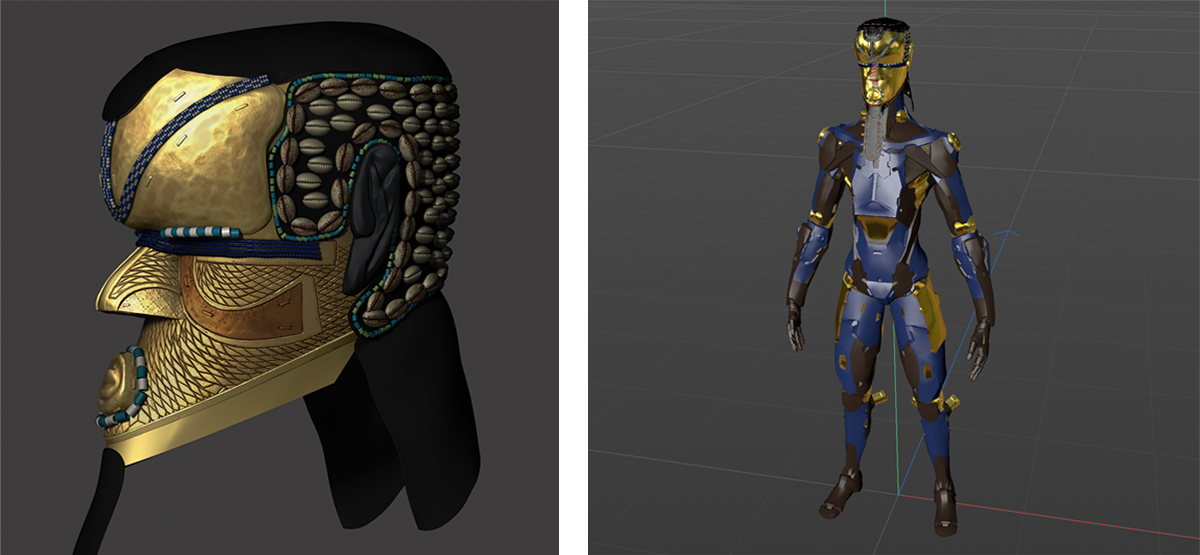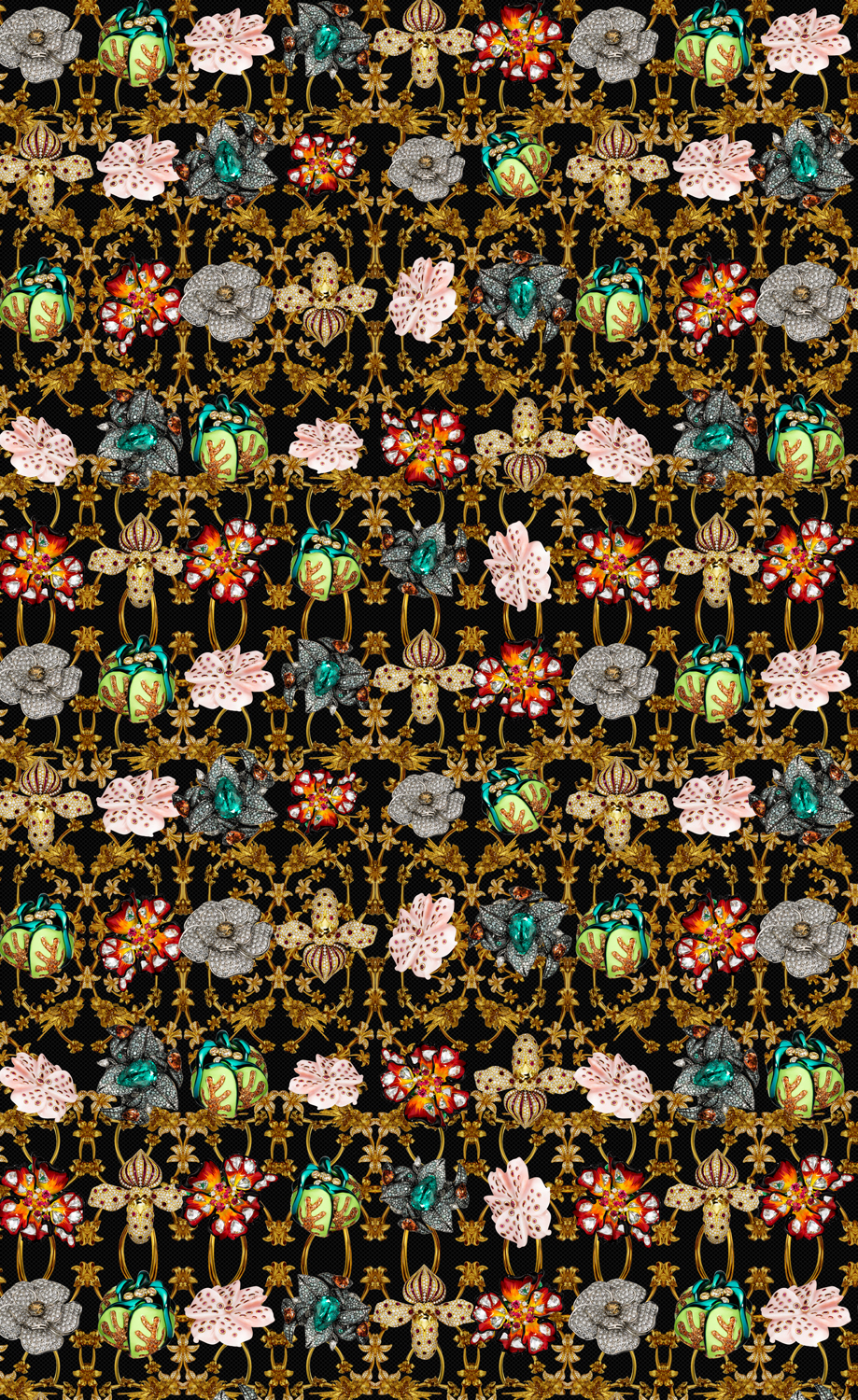LACMA × Snapchat: Monumental Perspectives is a multi-year initiative that brings together celebrated artists and leading technologists to create augmented reality monuments exploring histories of Los Angeles communities. In consultation with community leaders and historians, the initiative’s third and final collection of artists, Victoria Fu, Yassi Mazandi, Rashaad Newsome, Rubén Ortiz Torres, and Alison Saar, have used the lens of collective ancestral memory to examine the individual and communal legacies we leave today and have created works designed to be experienced at locations across Los Angeles with Snapchat’s camera.
Learn more about Rashaad Newsome’s monument Self Inventions below.
“When I think about the legacy of Black folks, I think about . . . endless innovation, folks having to sort of create themselves with lack of knowledge of where they came from.” Rashaad Newsome’s augmented reality monument honoring the Black community, Self Inventions, includes a beautiful series of shape-shifting robotic figures that reflect the resilience of Black people in the face of ongoing struggle, paying homage to the spirit of perpetual regeneration and innovation in Black culture.
As an interdisciplinary artist, Newsome blends several practices and mediums including collage, sculpture, film, CGI, photography, music, computer programming, software engineering, community organizing, and performance to create a divergent field that rejects classification. Using the diasporic traditions of improvisation, he pulls from the world of advertising, the internet, art history, Black culture, and queer culture to produce counter-hegemonic work that walks the tightrope between social practice and abstraction. The density of encrypted epigenetic material Black and queer people embody is made visible through collage and conceptual and technical amalgamations. His work celebrates Black contributions to the art canon and creates innovative and inclusive forms of culture and media.
Having already created augmented reality art himself, Newsome’s vision quickly came to life with the help of his lens creator, Michael French. Newsome then began to incorporate the conceptual foundations of his imagery, pulling from fractal geometry found in traditional African textiles, settlements and dwellings, architecture, sculpture, religious imagery, and systems. Fractals are mathematical shapes which are infinitely complex, forming patterns that repeat forever; every part of the fractal looks similar to the whole image, regardless of how zoomed in or out the viewpoint is. In Self Inventions, the optical effect of the robotic figures’ transformations from one form to another employs fractal geometry inspired by African art and its early use of abstraction. Often used as a term in computer science, abstraction here not only serves as a visual tool but illustrates a tactic in Black culture’s perpetual state of transformation.
The figures incorporate futurism both in their movement and in their new-age chromes and metallic sheens. Utilizing an ancestral patterning of geometry keeps the figures’ points of origin front and center for the viewer, even if only on a subconscious level. The endlessly repeating patterns of fractal geometry is also used in modern computing: in modeling for natural sciences and information technology, and in computer graphics and hardware. The link between design components originating in Africa and their presence in contemporary computing is an allegory for Black folks in America and the advancement of technology today.
The figures in Newsome’s lens recite a poem by the artist as they morph seamlessly from one form to another:
Come celebrate with me
that everyday something has tried to kill me
and has failed.
I have been blessed with a heart that has survived.
Filled to capacity with the epigenetic material I carry in my hard drive.
Carry, I'm a carry, I'm carrying.
Love into this future.
From the djembay to the drum machine, look at what Africans are doing with the computer.
Descendants of those who you cannot tame.
They call us black because they don't know our name.
Nameless, aimlessly, we move through spaces.
Adapt to spaces.
Create space where there are no spaces.
This is our safe space or perhaps a space with a healthy sense of risk.
The first time I came to this place, I had a time!
Past, present, and future.
Block universe.
African fractals transforming my form.
I have no center, for I am the center of all things.
I see myself in you and you in me.
Engaged in a software kiki.
Who you be?
Forever coming into being!
Where you from?
An idea waiting to be deciphered by the computers of generations to come!
The inclusion of Black diasporic and African creators in modern sectors such as the tech field and fine art world are recent developments within the longer histories of these spaces. Through his lens, Newsome highlights not only the beauty and light brought by diasporic voices to these spaces but also the endless possibilities introduced through inclusion. Newsome’s figures not only survive constant transitions of form, but each new iteration seems brighter and more stunning than the last—an ode to resilience and aesthetics inspired by Black culture.
Wth his cyborg-like figures, Newsome also draws comparisons between the labor performed by robots and the unpaid, compulsory service Black people have had to perform historically. In the face of untenable circumstances, Black culture has not only survived and adapted, but has found ways to flourish. The recitation of the artist’s poem asks the viewer to consider how Black folks were integrated into American culture, starting from the roots of slavery and continuing to the lack of safety, understanding, and comfort that Black creators are still forced to contend with today. This reminder is delivered through an invocation of the power of ancestry and African traditions, love, and capability, celebrating its own survival and ability. Newsome’s figures in Self Inventions are the “engineers of themselves,” paying homage to the legacy of Black resistance, carrying forward a history of endless innovation.



